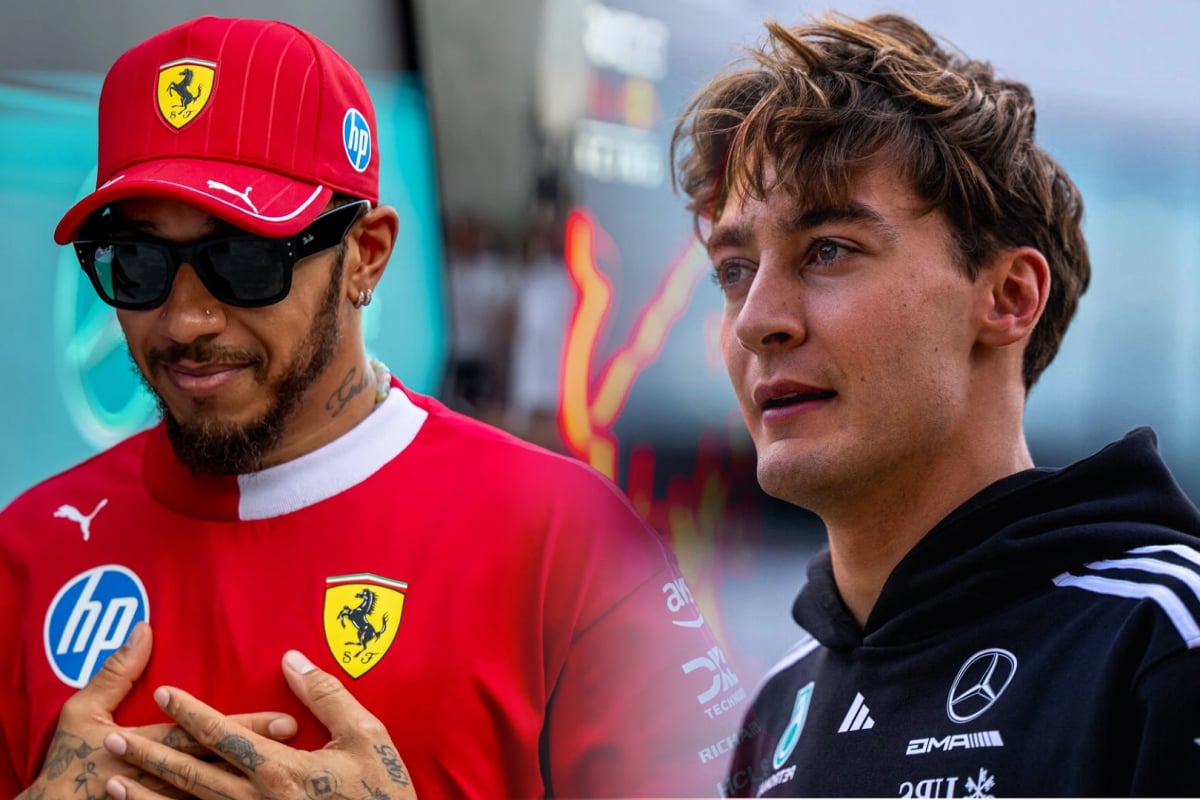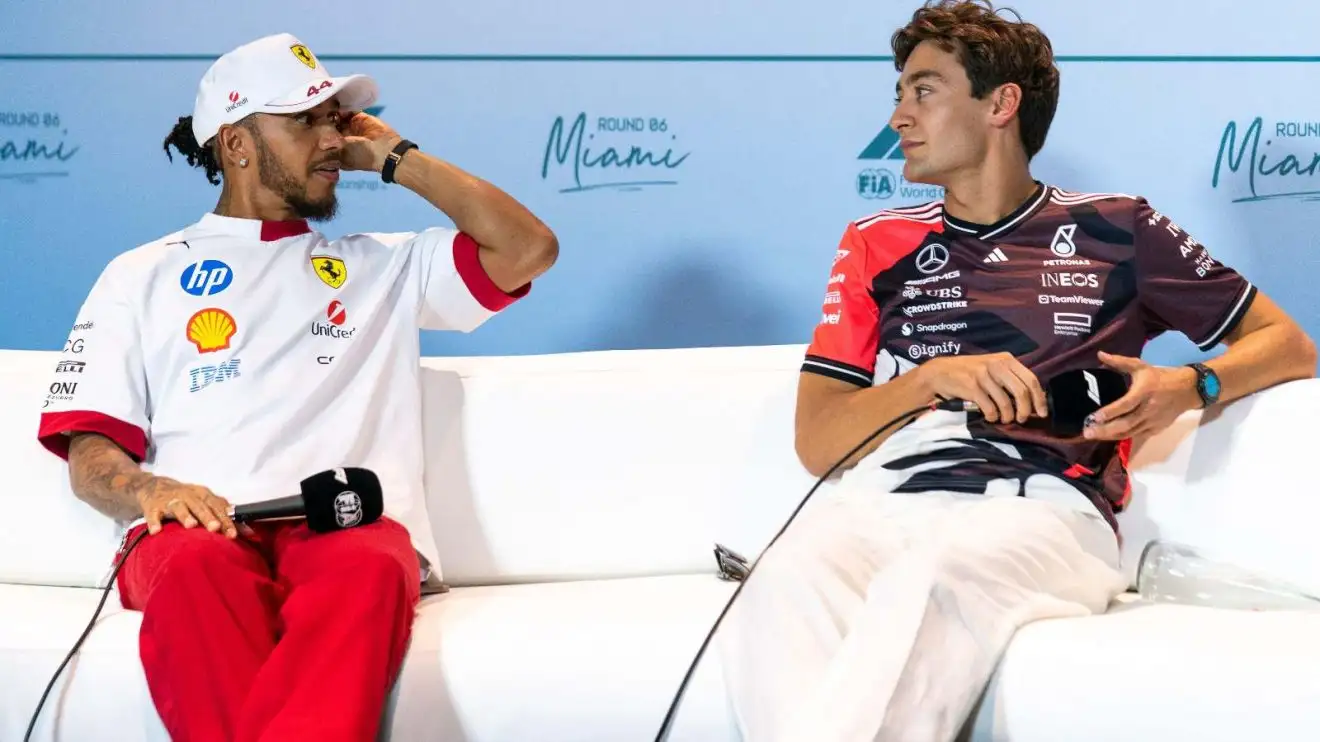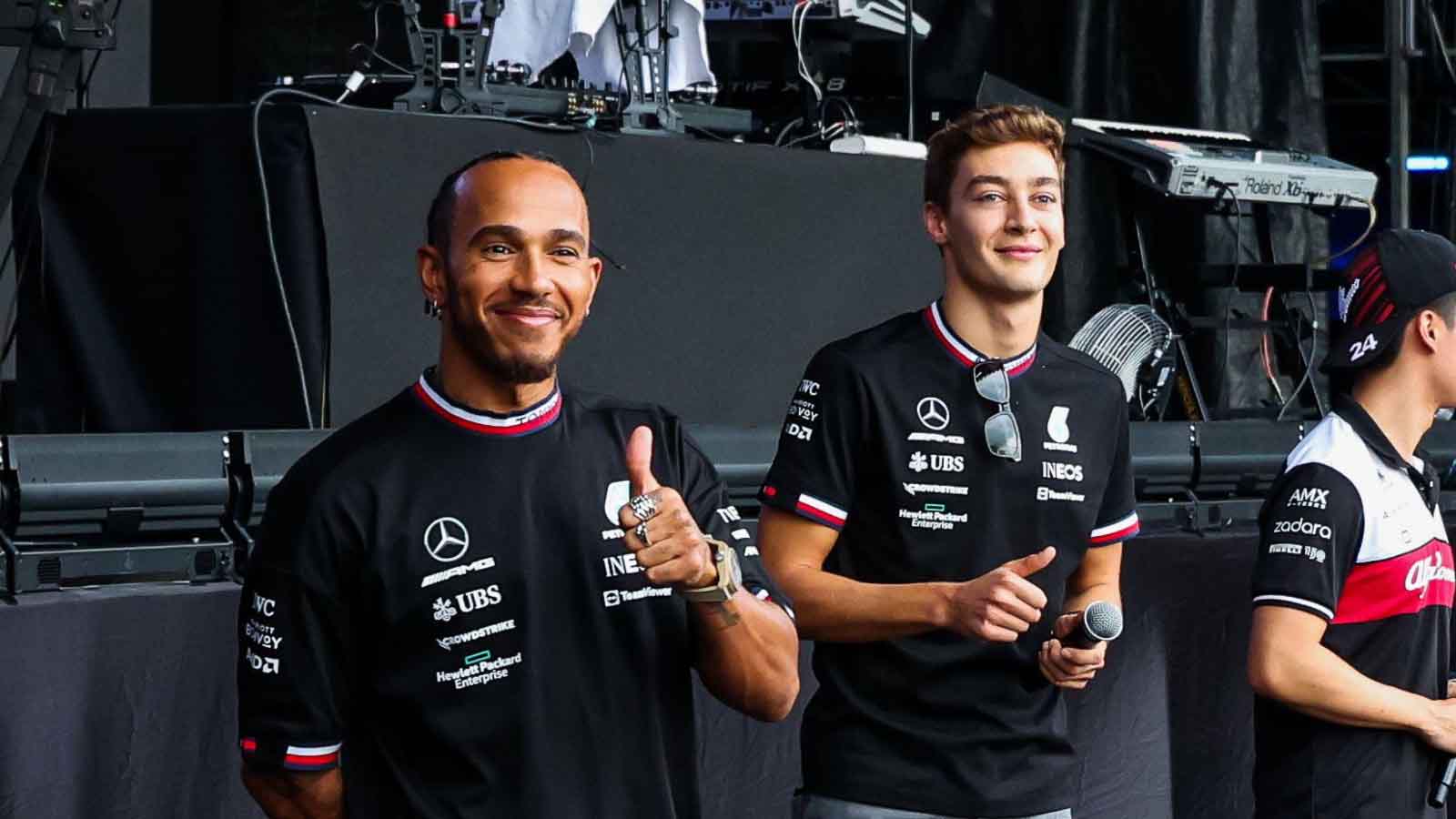In the high-octane world of Formula 1, change is the only constant. Drivers switch allegiances, regulations are rewritten, and dynasties rise and fall with breathtaking speed.
Yet, even by these dramatic standards, Lewis Hamilton’s seismic decision to leave Mercedes for the hallowed gates of Maranello to join Ferrari sent a shockwave through the paddock that is still reverberating today.
It was a move that didn’t just alter the career trajectory of a seven-time world champion; it thrust his teammate, George Russell, out of a long and formidable shadow and into the blinding spotlight of team leadership.
The transition has been a crucible, testing the young Briton’s skill, temperament, and his ability to carry the immense weight of the Silver Arrows’ legacy on his shoulders.

For three seasons, George Russell was the diligent understudy, the “Mr. Saturday” who consistently impressed in qualifying, the promising young talent biding his time alongside a living legend. He joined Mercedes in 2022, a move celebrated as the dawn of a new British powerhouse pairing. Initially, the dynamic was one of respectful collaboration. Russell himself referred to Hamilton as the “captain” of the team, acknowledging the decade of dominance and the six world championships his senior teammate had brought to Brackley. During Mercedes’ challenging period with the difficult W13 and W14 cars, their shared struggle to return to the front of the grid forged a sense of unity. Russell has admitted that these hardships likely brought them closer, as they were forced to work together, pushing in the same direction to solve the car’s fundamental issues.
However, the impending departure of a figure as colossal as Hamilton inevitably alters the internal atmosphere. As the 2024 season progressed and the reality of Hamilton’s exit loomed, subtle cracks began to appear in the unified facade. Whispers of favoritism, a classic F1 pressure-cooker symptom, started to circulate. After a particularly tough qualifying session in Monaco, Hamilton made cryptic remarks suggesting he didn’t anticipate out-qualifying Russell for the rest of the season, fueling speculation that the team’s developmental focus had already shifted to their future cornerstone. While former F1 figures like Johnny Herbert dismissed these claims as “a load of rubbish,” the very existence of the debate highlighted the underlying tension of a team in transition.
Now, with Hamilton in red, Russell is no longer the supporting actor; he is the undisputed leading man. Team Principal Toto Wolff, a key architect of Mercedes’ modern success, has been unequivocal in his support. He has publicly stated that Russell was “always underrated” while sharing a garage with Hamilton, noting that the sheer star power of a personality like Lewis naturally commands the majority of the “eyeballs.” Wolff’s praise underscores a quiet confidence that has been building within the team for years. They see in Russell not just raw speed, but the maturity, technical acumen, and unwavering determination required to lead a championship-contending outfit.

This is a role Russell has been preparing for his entire career, and he has carried a crucial piece of wisdom from his former mentor into this new chapter. He recently revealed that the “biggest thing” he learned from Hamilton was the simple, profound mantra: “winning comes first.” It’s a principle that cuts through the noise of fame, sponsorship, and the myriad distractions of F1. For Hamilton, winning unlocked what Russell calls “the ultimate gift of choice,” the freedom to dictate the terms of his own career. It is this same gift that Russell now seeks for himself.
His actions on the track since Hamilton’s departure was announced have spoken louder than any words. He has become a formidable force, securing victories in Montreal and Singapore, becoming the only non-Red Bull or McLaren driver to stand on the top step of the podium in the 2025 season so far. These weren’t just wins; they were statements of intent. They showcased a driver who has evolved from a raw talent into a calculated and clinical race winner, capable of managing pressure and capitalizing on opportunities with the ruthlessness of a champion.

The confirmation of his multi-year contract extension, keeping him with Mercedes into the new regulation era of 2026, solidifies his position as the bedrock of the team’s future. He is now the experienced veteran tasked with guiding the next generation, with the prodigious Kimi Antonelli stepping up as his new teammate. This new dynamic—the established leader paired with a highly-touted rookie—is a classic F1 template, and it places Russell firmly in the Hamilton role of a decade ago.
For Lewis Hamilton, the move to Ferrari was a “gut instinct,” a “leap of faith” driven by the desire for a new challenge after growing comfortable, perhaps even complacent, at Mercedes. It represents a final, audacious roll of the dice in his quest for an unprecedented eighth world title, a chance to achieve the ultimate motorsport dream: winning a championship in the iconic scarlet car.
For George Russell, Hamilton’s departure was the catalyst that accelerated his destiny. He is no longer just a driver for Mercedes; he is Mercedes. He is the face of its present and the architect of its future. The shadow of the GOAT is long and casts a permanent place in the annals of the sport, but George Russell is proving, race by race, that he is more than ready to step into the light and forge a legacy of his own. The Silver Arrows are now his to command, and the new era has truly begun.